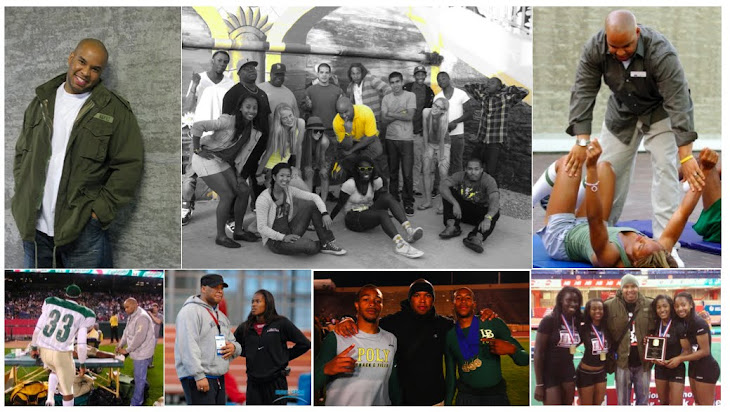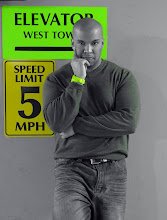Posted: Tuesday, January 11, 2011 1:30 am
Welcome to Ask Doc Dossman, a weekly column where you can ask Long Beach’s pre-eminent sports therapist…whatever you want! If you already forgot who Doc is, click here to read our introduction. To visit Doc’s website, click here, and buy his book, What I’ve Learned From Your Kids. Email questions to Doc ataskdoc@docdossman.com.
Hello Strong Beach! Here we go again . . . another week. I was advised to keep my columns down to a maximum of about 1,500 words. I was only able to get to two of the questions because they were such good ones, my answers got a little lengthy! I will answer more next week!
Keep your eyes peeled for the next video blog which releases on Thursday night. We will discuss water intake: How much water should you be drinking every day? Stay tuned! Now on to our questions for the day!
Hi Doc!
My 17-year-old son is suffering from right lower back pain. He is tall and thin (6'8” and 215 lbs.) He is an athlete playing three sports (football, basketball, and baseball), but right now the only time he feels the pain is when he swings the bat. The pain started in early December and he doesn’t remember a single incident that first triggered it. He took the whole winter break off to rest it, but now that he is playing again, the pain has not subsided.
The pain is debilitating and with the baseball season fast approaching he is getting concerned. He played basketball last night and said he didn’t have any pain, but then played baseball today and could only go 2 at-bats and could barely run to first on a base hit. He has an important showcase coming up and at this point won’t be able to participate.... HELP!!! :)
BTW: He bats on the left and most of his pain comes with the follow through of his swing.
Sarah W.
Hi Sarah.
Thanks for giving me a detailed report! The more information you give, the better help I can give. The cause of low back pain isn’t as simple to figure out as some might think. There are so many factors that can affect your spinal health. Ok, let’s see, he bats as a lefty and his pain is during the follow through phase of his swing. He also had trouble running after swinging the bat? Hmmm . . . this gives us several options.
Initially, I’d look to the superficial muscles (erectors) of his right lower back area. I don’t think you would be emailing me a month later if it were this easy. At this point, things aren’t as simple as local massage to the area of complaint. I am sure you have used your motherly instinct and tried to work your magic on his back. Unfortunately, it seems that he is compensating in the lower back due to some muscular imbalances. What I will do is give you a few common scenarios that could be at the root of his issue, but the bottom line is that if you want to get him back on the field ASAP, you will need to get him in for treatment. I’d recommend Active Release Technique.
1. Restricted Hip Rotators - The muscles in his butt that turn his foot in and out are the hip rotators. If he walks or stands with his toes in or out, he probably has tight hip rotators. Tight hip rotators cause lower back pain and will affect the power of his swing. If he is left-handed, restricted left hip internal rotation and/or restricted right hip external rotation will limit his back swing and hurt his follow through.
2. Restricted Hamstrings - When the hamstrings are tight, there is an increased stress placed on the lower back. This type of stress hinders the rotation of the torso (spine). One has to be careful here because when spinal rotation is limited, there’s a tendency to overcompensate with shoulder motion. Yes, tight hamstrings can cause rotator cuff issues! If this were happening with him, his swing would become more “choppy”. I think he would have issues on the basketball court as well if the hamstrings were the issue.
3. Restricted Quadratus Lumborum (QL) - This also causes limited torso rotation, which, as stated before, creates excessive shoulder rotation due to overcompensation. The spine loses ability to recoil, which just might affect someone’s bat swing! QL issues tend to cause “sway back” during back swing as well as during the follow through.
4. Restricted Iliotibial (IT) Bands - The IT Bands are those bands that run down the side of your thighs. When they are restricted/tight, it is difficult to get down into the batting stance. This hurts swing stability because it makes it harder to redistribute weight during both phases of the swing. This is typically followed by restricted spinal rotators.
5. Restricted Spinal Rotators - This one is fairly straightforward. If he has restricted spinal rotators, this will negatively affect his torso rotation. When this happens, there’s a tendency to overcompensate with excessive motion in the hips and shoulders.
6. Restricted Hip Flexors - These are the muscles in the front of your hips. Tight hip flexors are a common cause of lower back pain. When the hip flexors are tight, it’s difficult to translate the hips through the swing phases. I think if this were his issue, he would suffer on the basketball court as well.
These are the areas I would look at to narrow things down. If I had to take a guess, I’d go with #3 and #5. Like I mentioned earlier, lower back pain isn’t so black and white. When there is no mechanism of injury, the source of the pain is usually a result of overcompensation due to faulty biomechanics. Am I talking too much? You should definitely get him checked out in order to get him on the road to recovery ASAP. Unfortunately, there is not a quick fix solution, but I hope that you are encouraged to know that your son’s issue can be helped!
Hey Doc! I was wondering what exercises or things could you do to help increase the function of your proprioceptors in your ankles??
Thanks,
Your biggest fan
Hi Keyana! ☺
Yes, I just called you out! How are you? We miss you at the office. We hope that the University of Michigan is treating you right! This is a good question! I am happy that you are interested in enhancing proprioception. I know that you understand what this is, but for the rest of our readers, I will take a moment to explain.
Proprioception is your body’s ability to know its position in space without visual stimulation. For example, proprioception suffers when you are intoxicated. If a police officer wants to do a sobriety check, he can ask you to close your eyes and touch your nose. That’s proprioception! The very fact that you know where one body part is relative to another without looking says that your stuff if working! If you can’t do this, you’re in trouble!
Proprioceptors are like tiny little satellites within your joints and tissues that send information back to your brain. This is typically information concerning the position of that part of the body relative to the ground or another part of the body. Keyana is asking about the proprioceptors in the ankles. This will be helpful to her because she wants to prevent future injury to the ankles. This is a common injury for soccer players. I will keep it simple and give you three suggestions. These suggestions are for every healthy athlete who wants to PREVENT injury:
1. Barefoot Walks On The Beach - There is something we call “disease of the modern man”. It simply says that we typically walk on flat surfaces from day to day. Without a change in terrain, there is little stimulation to the proprioceptors in the feet/ankles. Proprioceptors are like muscles in that, if you don’t use them, you can lose them. With weakened proprioception, we lose this sense or ability to maneuver when a sudden change in terrain occurs. When this happens, we can suffer a stubbed toe, an ankle sprain, or maybe even trip and fall! Walking on the sand at the beach is a good way to stimulate proprioception. The terrain is constantly changing, thus allowing the body ample opportunity to practice proprioception! So just take a long walk on the beach! What are the beaches like in Michigan? SMILE.
2. Rocker Board - Range of motion exercises on the rocker board with eyes open and then eyes closed. You can progress from two-legged to single-legged exercises.
3. Balance/Wobble Board (increasing intensity levels) - Range of motion exercises on the balance board with eyes open and then eyes closed. You can progress from two-legged to single-legged exercises. You can then progress to the fun stuff! You can do squats (one and two-legged). I like to play catch on the balance board. Eyes open of course!
I hope this helps!
Well that was pretty fun! I love this stuff! Of course I always wish I had more information. My perception of things is limited to the information you give me, so be careful when taking my recommendations over your own physician who actually examines you regularly. The more information you give me, the more I can help. It helps me to give you the best recommendations when you provide information like age, sex, date of injury, past injuries, and things of that nature. Well that is all we have time for today folks! Until next week, stay STRONG BEACH!!!
To visit Doc’s website, click here, and buy his book, What I’ve Learned From Your Kids. Email questions to Doc ataskdoc@docdossman.com.






No comments:
Post a Comment